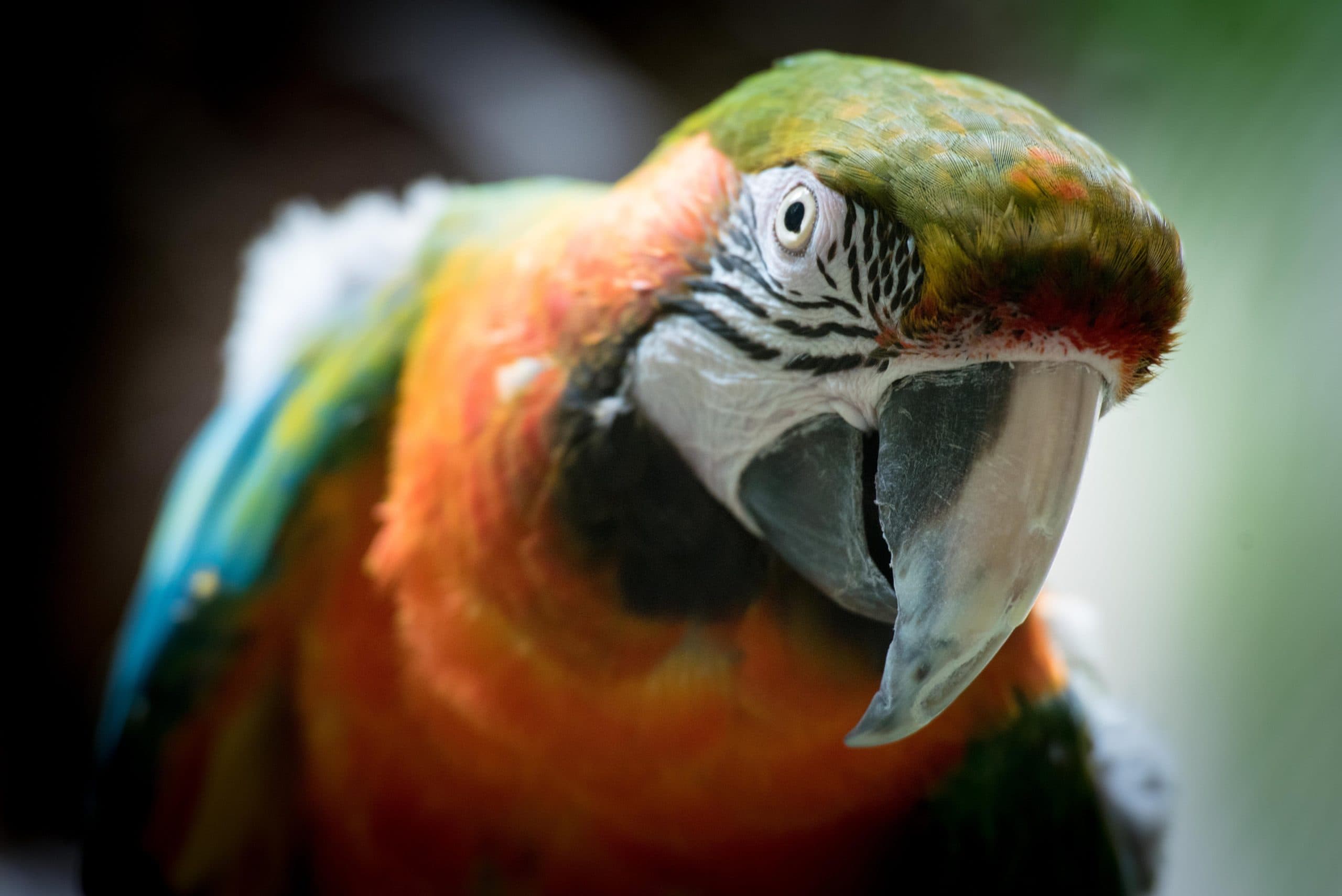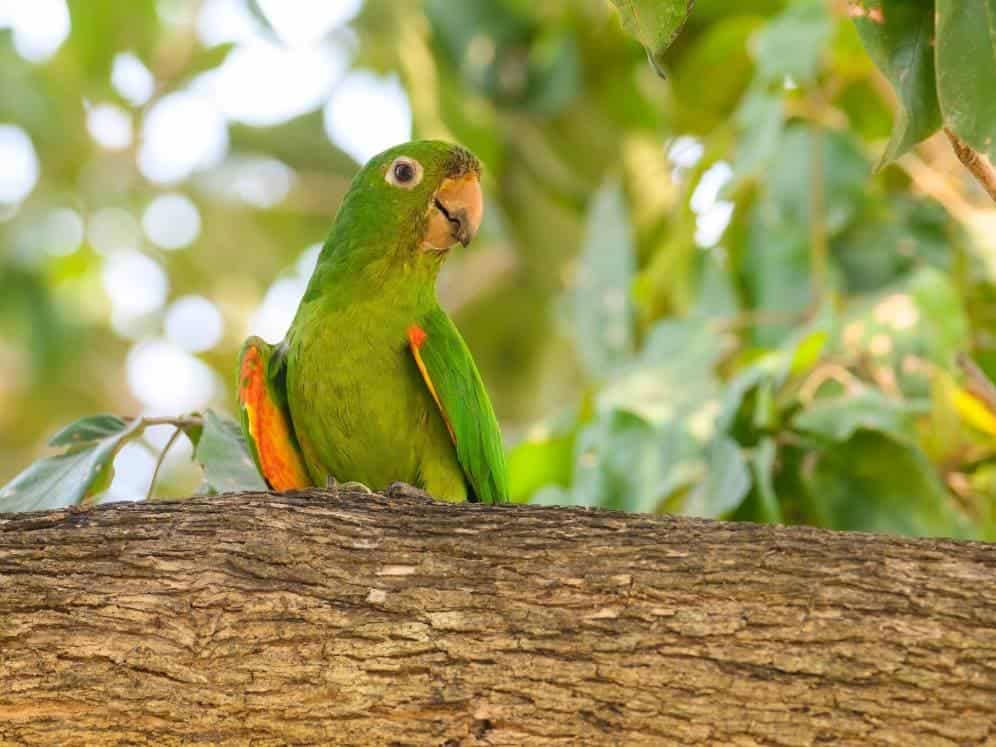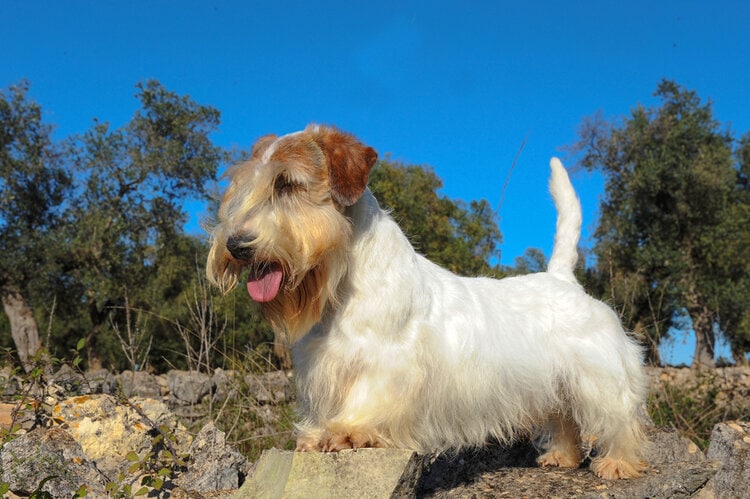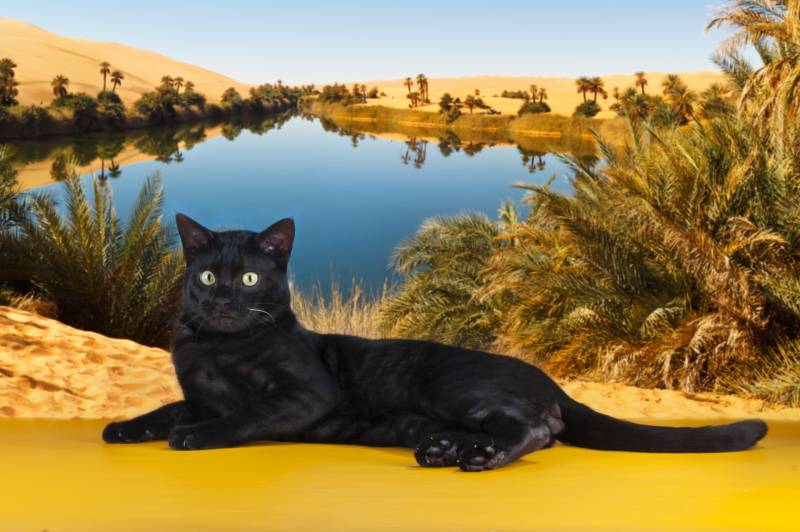Click to Skip Ahead
The strikingly colorful Harlequin Macaw is a hybrid parrot, a cross between a Blue and Gold Macaw and a Green-Winged Macaw. This brightly colored bird makes a wonderful pet, as they are a combination of the best aspects of each parent, meaning they are friendly, intelligent, and beautiful. They are known to be somewhat needy at times and require plenty of daily interaction, but with enough socialization and attention, they are friendly and social.
Their striking plumage is one of the main draws of keeping this parrot as a pet, but there is plenty more to love about them. Read on for more information about this unique hybrid macaw.

Species Overview
| Common Names: | Harlequin Macaw |
| Scientific Name: | Ara chloropterus x Ara ararauna |
| Adult Size: | 35–40 inches |
| Life Expectancy: | 40–50 years on average, up to 80 years |
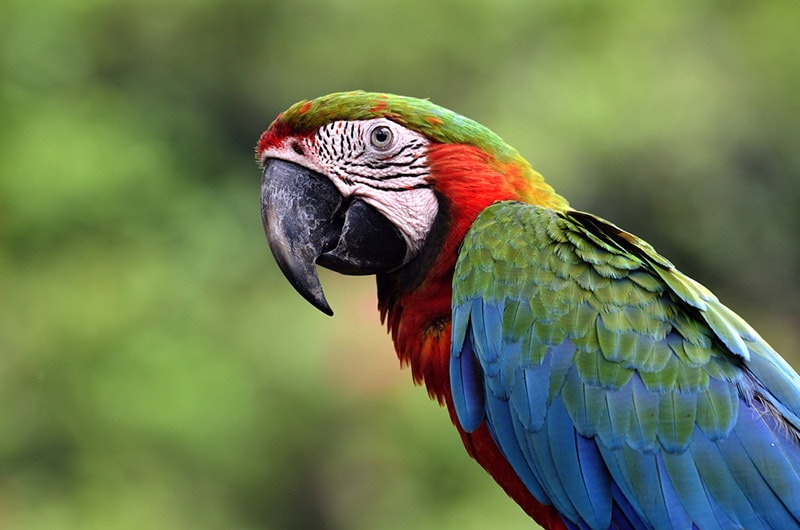
Origin and History
The Harlequin Macaw is a captive-bred animal and rarely seen in the wild. The Blue and Gold Macaw is native to Central and South America, and the Green-Winged Macaw is found mainly in the southern parts of South America. This technically makes it possible for the two to meet and pair up, but it is still highly unlikely.
With the vibrant colors and patterns of their plumage and their amusing personalities, “Harlequin” is an apt name for these birds. They are commonly found in the pet trade despite being rare in the wild, as they are easily bred in captivity and are even used to create other hybrid macaws, including:
- Fiesta Macaw
- Tropicana Macaw
- Jubilee Macaw
- Quatro Macaw
Temperament
Compared to most other macaw varieties, the Harlequin is a laidback bird that is not overly energetic. Still, these parrots are certainly not lacking in personality and are usually described as fun, comical, and entertaining birds by their owners. They are highly intelligent and can learn a variety of tricks with ease, along with a handful of words and phrases. While they are generally described as one-person birds and attach strongly to their owners, with early socialization, they are friendly birds that can enjoy the company of other people too.
Depending on their genetics, the Harlequin may be more docile and laidback like the Green-Winged or more playful and “clownish” like the Blue and Gold Macaw. Either way, they are calmer than most other macaws and make great birds for owners looking for a docile pet. Like most parrots, they can be cranky and moody at times, but this is rare. They are good-natured birds for the most part.
- Friendly
- Calm and docile
- Intelligent
- Comical
- Easy to train
- Long lifespan
- Noisy
- Need plenty of attention
- Cranky at times

Speech & Vocalizations
Almost all macaws, including the Harlequin, are known for being one of the loudest parrot species in the world, and they can produce ear-piercing vocalizations! This is especially apparent in the early morning and evening, when they are known to scream and squawk at high volumes, even if they are happy and content. If you are looking for a quiet bird, a macaw is not the parrot for you!
That said, they are highly intelligent and can become good at mimicking speech with a bit of training, though this is usually limited to a dozen or so words and sounds.
Harlequin Macaw Colors and Markings
Since they are a hybrid breed, the Harlequin Macaw can vary in their colors and markings. Males have the dominant genes in macaws, so your Harlequin Macaw’s coloring will depend on the coloring of the male parent. Green-Winged fathers will produce young with light orange breasts, whereas Blue and Gold fathers will produce young with more vibrant orange-red breasts. The rest of their plumage is made up of vibrant blue and green on their backs, with golden-yellow tail feathers and orange-red heads.
Males and females look exactly the same and are almost impossible to tell apart without genetic testing.

Caring for the Harlequin Macaw
Harlequin Macaws are social birds that need plenty of daily interaction with their owners to stay happy and healthy. Without this regular interaction, they can quickly become bored and destructive, and they may even act aggressively or begin to pluck out their feathers in frustration. This is why owning one of these parrots is such a massive responsibility, as they require a huge investment in time.
They’ll need a cage that is at least 5 square feet, but the bigger, the better. They should be allowed time outside of their cage as much as possible, at least 3–4 hours per day. Their cage should be big enough for them to stretch their wings and climb around in and filled with a variety of toys, perches, and swings to give them adequate entertainment.
While macaws in the wild live in pairs and even small nesting groups, pet ones rarely get along in pairs. Opposite-sex pairings may work if they are raised together from youth, but same-sex pairings will almost certainly fight.
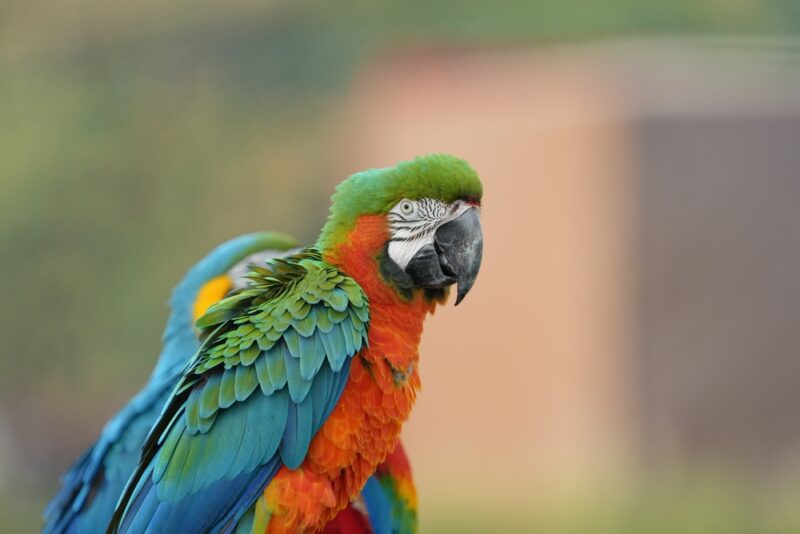
Common Health Problems
Macaws are hardy, healthy birds in general, and if they are given the correct diet, physical and mental stimulation, and proper care, they rarely fall ill. The biggest health problems with macaws are behavioral ones caused by boredom and dietary issues.
Of course, like all pets, diseases can still occur despite your best efforts. Common illnesses and health issues affecting these birds are:
- Proventricular dilation disease
- Psittacosis
- Infections (bacterial, fungal, viral)
- Allergies
- Feather plucking
- Beak malformations in chicks
Even if your macaw appears vibrant and happy, we highly recommend an annual visit to an avian vet to make sure they are healthy. If your macaw displays a lack of appetite, nasal discharge, listlessness, or drastic behavior changes, you should take them to a vet straightaway.
Diet and Nutrition
In the wild, macaws have a fairly varied diet of nuts, seeds, and fruits, and this can be difficult to replicate in captivity. We highly recommend specially formulated pellet mixes, as you can then be sure your parrot is getting all the nutrition that they require. High-quality seed mixes are also vital additions to their diet, though these should not make up more than 20% or so of their daily caloric intake. Bird-safe fruits and vegetables are also great healthy treats to give them but only in small amounts.
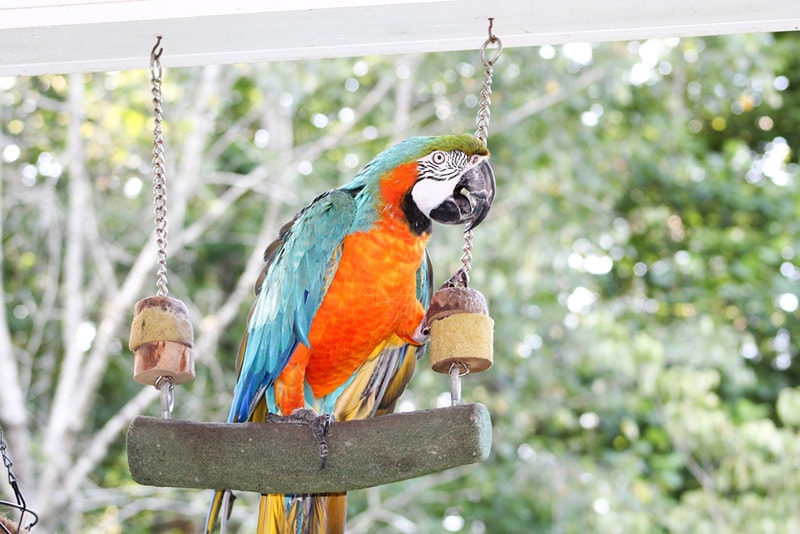
Exercise
Since these birds are so active in the wild, they need plenty of daily exercise as pets to avoid getting obese, a surprisingly common problem. Playing and interacting with your macaw for several hours every day is essential, as is providing them with plenty of toys that they can use to entertain themselves. Time outside of their cage on a large perch with toys and ladders is vital. They’ll need at least 3–4 hours of play and exercise per day. These birds are not happy to simply sit in their cages. Part of what makes them such a massive responsibility is their high exercise and interaction needs.
Where to Adopt or Buy a Harlequin Macaw
Harlequin Macaws are not cheap, even if you adopt one, and they are expensive to care for too. You can expect to pay anywhere between $3,000 and $5,000 for a Harlequin Macaw and sometimes even more. Since these birds are such a huge responsibility and have such long lifespans, some owners cannot provide for their needs and give them up for adoption. Adoption agencies and rescue organizations frequently have macaws in need of loving homes, and you’ll be giving a bird another chance at a happy life and saving a bit of money.

Conclusion
Harlequin Macaws are beautiful birds with some of the most vibrant and gorgeous plumage of any parrot species. They are also comparatively docile, easy-going parrots that are friendly, social, and affectionate, making them ideal for first-time owners. Of course, these birds have incredibly long lifespans and require a ton of care and interaction, so they are a massive responsibility that should not be taken lightly. Your macaw may very well outlive you, so keep in mind the fact that this will likely be a lifelong relationship!
Harlequin Macaws make wonderful pets and will certainly bring you years of joy and companionship if you are willing to take on the responsibility.
You may also want to read about:
Featured Image Credit: Unsplash
